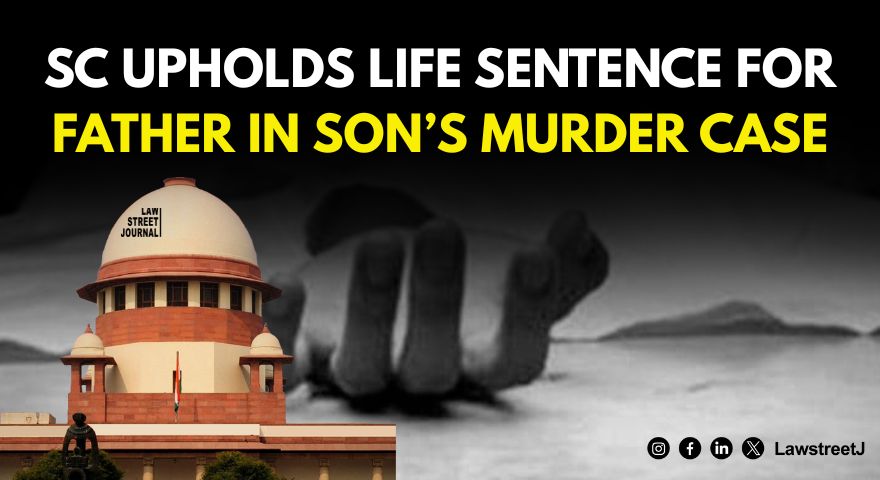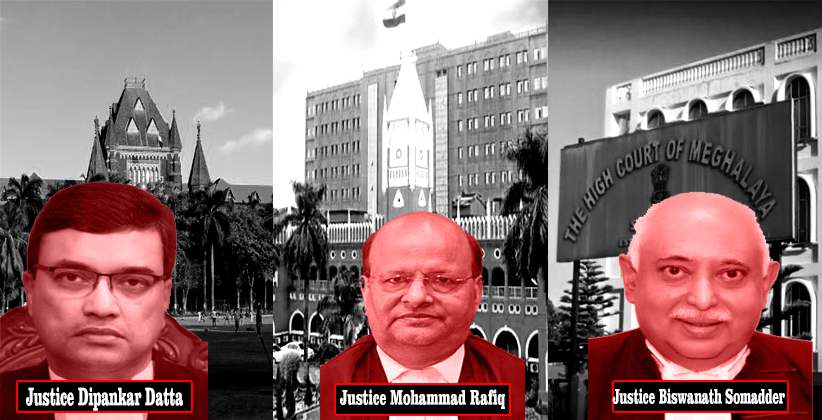NEW DELHI: The Supreme Court has said motive remains hidden in inner recesses of perpetrator's mind, which often cannot be ferreted out by the investigation agency, as it upheld conviction of a man for killing his own son.
The court said, just as a strong motive does not by itself result in a conviction, the absence of motive cannot be a sole ground, which would result in an acquittal in a criminal case.
A bench of Justices Sudhanshu Dhulia and K Vinod Chandran upheld conviction of a man for filicide, rejecting his fervent plea of the impossibility of the father killing his only male child, by terming it as puerile.
"When the eyewitnesses are not convincing, a strong motive cannot by itself result in conviction, likewise when the circumstances are very convincing and provide an unbroken chain leading only to the conclusion of guilt of the accused and not to any other hypothesis; the total absence of a motive will be of no consequence," the bench said.
The appellant accused Subhash Aggarwal challenged his conviction and sentence of life term imposed by a Delhi court and upheld by the High Court.
He contended no motive existed for the alleged crime; especially when the accusation was that the father killed the son.
His counsel said, there was neither a long-standing animosity between the father and son nor was there any immediate proximate incident which could lead to any inference of any motive. If the case is built solely upon circumstantial evidence, absence of motive will be a factor that weighs in favour of the accused.
In its April 17, 2025 judgment, the bench said, "Motive remains hidden in the inner recesses of the mind of the perpetrator, which cannot, often than ever, be ferreted out by the investigation agency."
The court said, though in a case of circumstantial evidence, the complete absence of motive would weigh in favour of the accused, it cannot be declared as a general proposition of universal application that, in the absence of motive, the entire inculpatory circumstances should be ignored and the accused acquitted.
The prosecution claimed, the family of the accused consisted of himself, his wife and five children: the deceased was the youngest son. Two of his elder daughters were married and the accused was staying along with his wife and three younger children in the house which was the scene of occurrence.
It was alleged on the night of December 14-15, 2012, the mother and two daughters were sleeping in a room, the deceased son in an adjacent room and the father in the drawing room. At about 12:45 am, the mother and daughters woke up hearing the shouts of the father; that the brother is no more. The mother and daughters in their deposition corroborated each other on the narration of how they came out of the room and found the deceased in a pool of blood.
The mother and the sisters of the deceased spoke in tandem about the accused having brandished a screwdriver, trying to convince them that the death was a suicide by reason of a self-inflicted wound, with the screwdriver.
The doctor and the ballistic expert, however, deposed that the death was caused by reason of hemorrhagic shock and huge blood loss consequent upon firearm injury which was ante-mortem in nature, fresh in duration, caused by a bullet fired from close range.
Having considered the matter, the bench said, the circumstances coupled with the falsity of the claim made by the accused immediately after the detection of the body, to the onlookers and the false explanation given by the accused in his statement under Section 313 of the CrPC, regarding both his hands having been forcefully smeared with gunshot residue provides further links in the chain of circumstances which is complete and leads only to the hypothesis of the guilt of the accused and not to any hypothesis of innocence.
The accused tried to convince the prosecution witnesses that the deceased killed himself with a screwdriver and brandished one, to fortify the contention.
However, the court found, there were no blood stains seen on the screwdriver and the injury clearly was a gunshot injury and not one caused by a screwdriver.
"The falsity of the assertion of suicide with a screwdriver, at the scene of occurrence, coupled with the falsity of the claim of forceful rubbing of a cotton with a gunshot residue particle on his hands; since then, gun-shot residue would have been detected on both hands of the accused, is another circumstance against the accused," the bench said.
The court also noted the accused could not explain what led him to the body at the dead of the night, when all were asleep.
The accused admitted that he owned the gun, but his explanation was that it was hidden by his children, which is not plausible in the teeth of the corroborated deposition of prosecution witnesses including wife and children of the accused that it was in the custody of the husband and that only he could use it, the bench said.
The bench found the doctor deposed the sole injury was sufficient to cause death in the ordinary course of nature. It pointed out the doctor also spoke of the trajectory of the bullet inside the body, which was obliquely downwards from the left side of chest, first puncturing the lung and then taking an oblique turn to hit the heart.

















